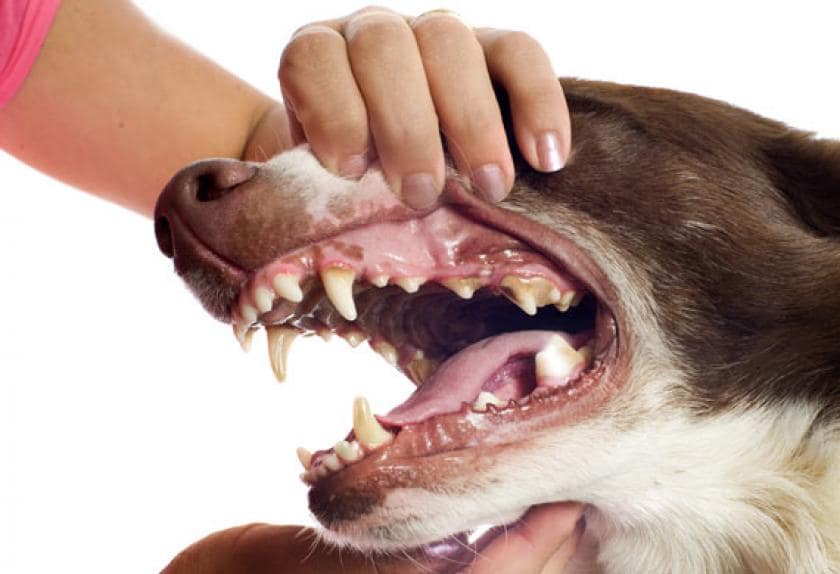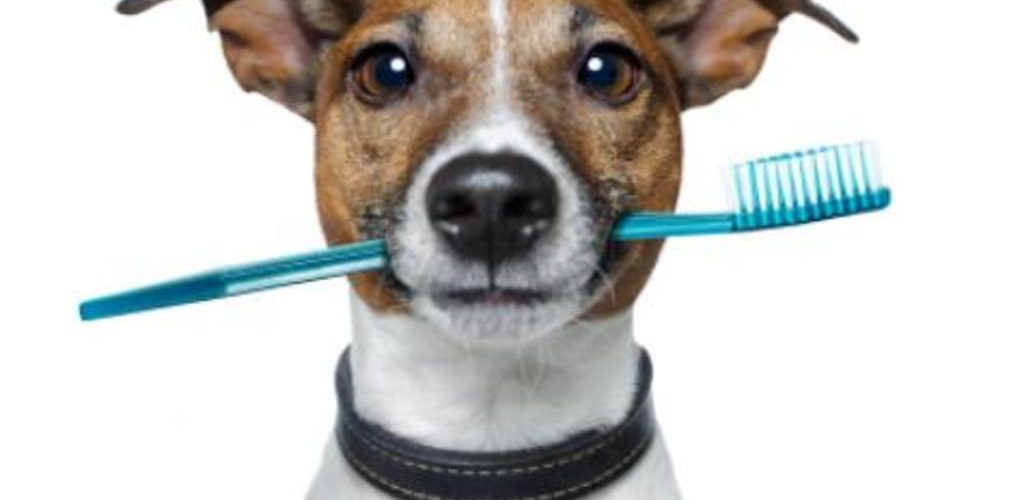Dental disease is one of the most common diseases diagnosed by veterinarians. Affecting both dogs and cats, it can occur in pets as young as 2-3 years of age. In fact, veterinarians report that the majority of the dogs and cats seen have some degree of dental disease by age three. Fortunately, proper oral care can help prevent your pet from having to experience the following types of illnesses.

1. Plaque and Tartar
Plaque and tartar begin to build up on your pet’s teeth, affecting not only the tooth itself but the tissue around your pet’s teeth. Tartar and calculi appears as tan or brown colored deposits on your dog or cat’s teeth.
2. Periodontal Disease
As your pet’s dental disease progresses, periodontal disease begins to occur and affects the tissues surrounding your pet’s teeth. Gingivitis (inflammation of the gums) is one of the first changes to occur. However, the majority of dental disease occurs below the gumline, where a pet owner is unable to actually see the damage being done to their pet’s teeth.
3. Toothache
Have you ever experienced a toothache? This is likely the type of pain that your pet is experiencing on a regular basis because of dental disease. In fact, the discomfort can be severe enough to cause your pet to stop eating and even begin to lose weight.
4. Systemic Illnesses
Besides being a persistent source of pain for your pet, dental disease can also cause more serious systemic illnesses, such as kidney disease and possibly heart disease.
5. Bad Breath
Bad breath (halitosis) is one of the first signs of dental disease in pets. If your dog or cat has breath that smells as though it could knock you over, it’s time to have your pet checked for dental disease.
6. Retained Baby Teeth
Also known as retained deciduous teeth, retained baby teeth are commonly seen in dogs, particularly in small breed dogs. If these baby teeth do not fall out normally and are allowed to remain in your dog’s mouth, they can cause crowding because of the extra teeth and can even make it difficult or impossible for the permanent teeth to erupt properly.
7. Stomatitis
The inflammation of a pet’s oral mucuous membranes, also known as stomatitis, can affect wide portions of the mouth and can be quite painful. Although dogs can suffer from stomatitis, it is more common in cats.
Better Teeth Means Better Health
Proper dog dental care or cat dental care begins with regular brushing of your pet’s teeth at home. However for pets that simply will not use a dog toothbrush or cat toothbrush, there are numerous types of dentrifices available that can help keep the teeth clean. These include dog dental chews, cat dental treats, special toys, oral rinses and more. Ask your veterinarian for advice about the most appropriate choice for your pet.
Don’t Forget the Vet Visits
Proper oral care also means regular examinations by your veterinarian. He or she may be able to do a preliminary examination on your pet’s mouth while your pet is awake. However, in most cases, your dog or cat will need to be sedated or anesthetized for a proper oral examination. This examination may even include X-rays of your pet’s teeth. It will also include a professional cleaning, removing the tartar and calculus from both above and below your pet’s gumline as well as planning and execution of any other dental work that needs to be performed for your pet

~At Heart Arrow We Love Pets~
Thanks to PETMD for portions of this article

